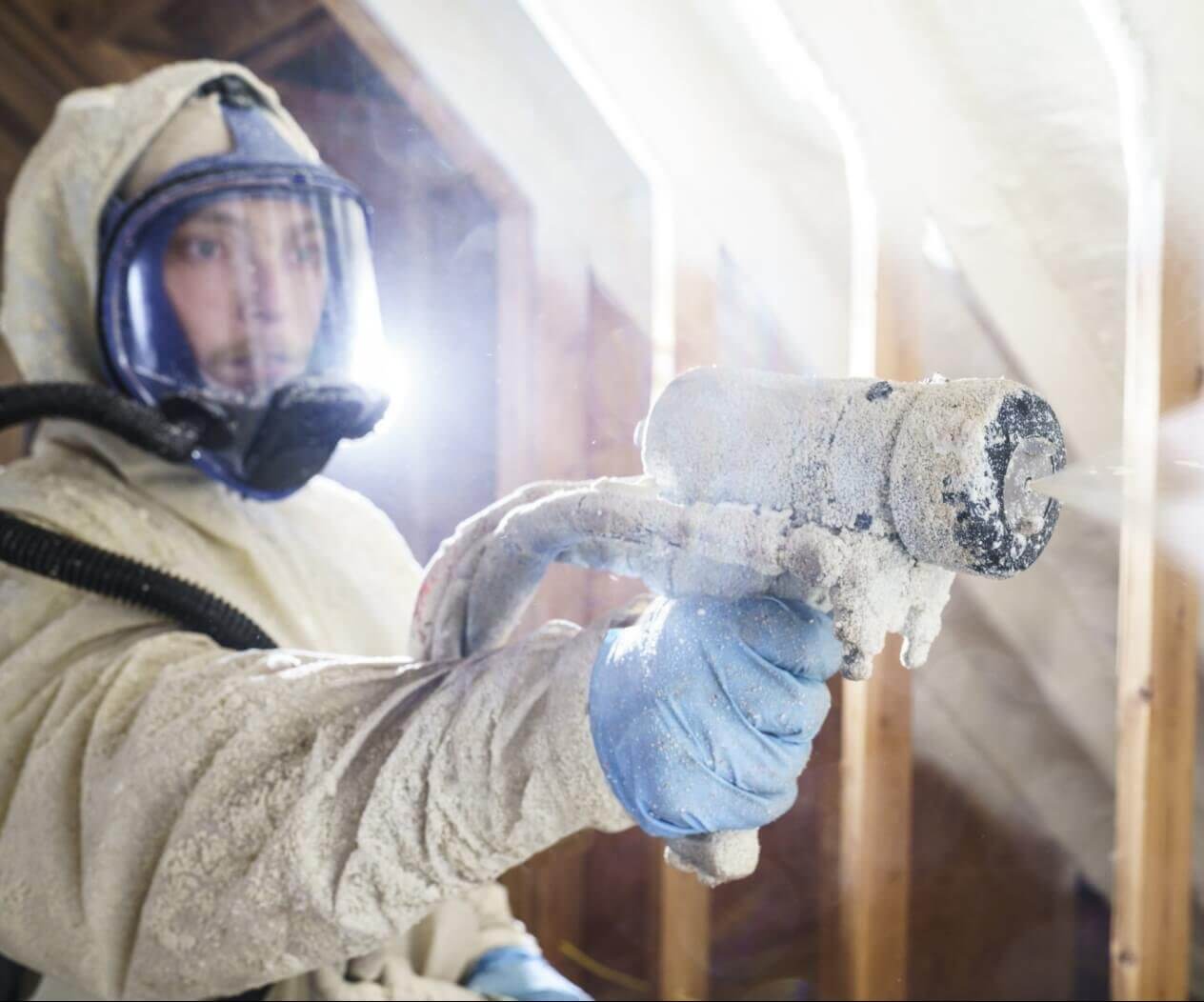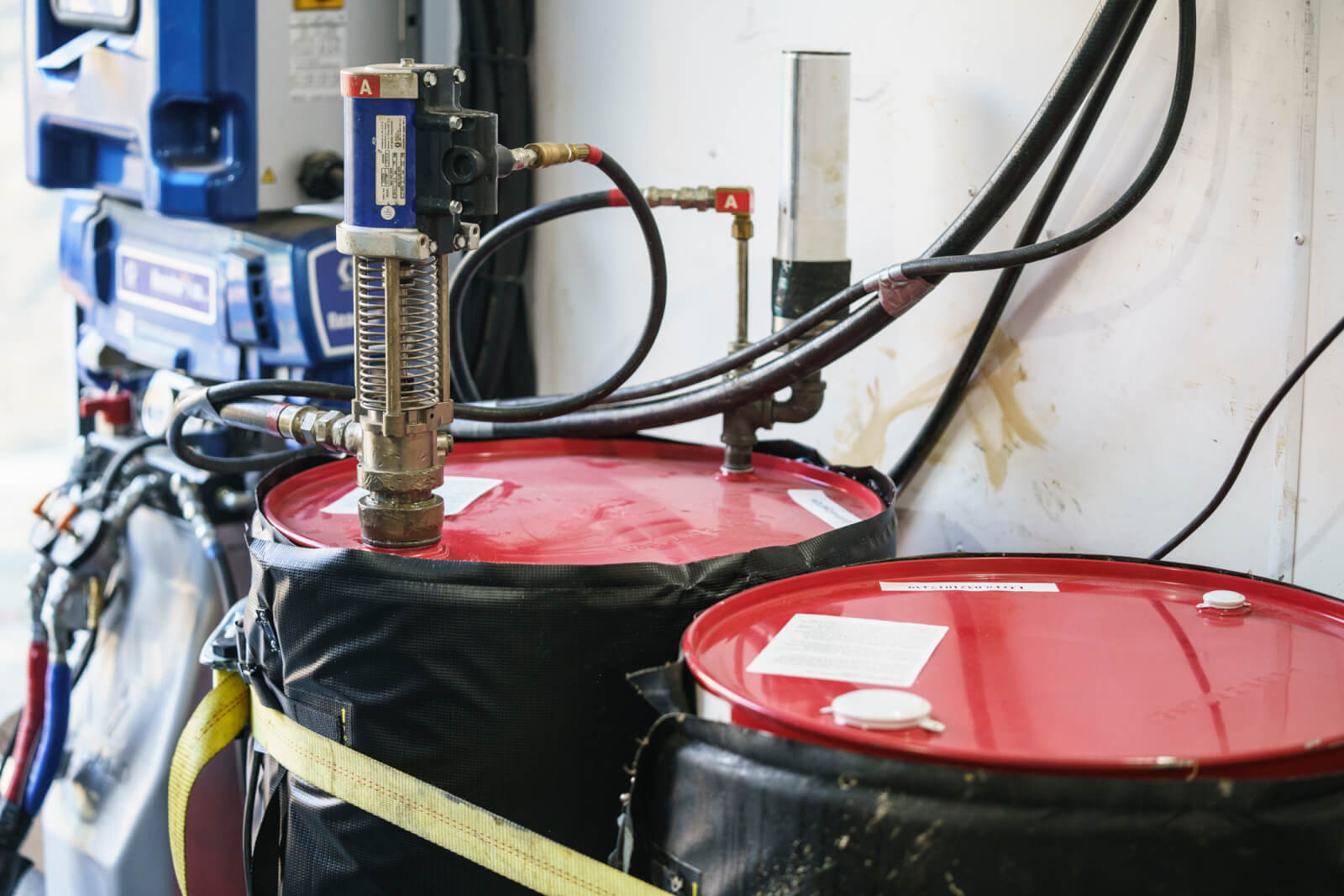Safety Tips For Your Spray Foam Insulation Business

Health Risks of Spray Foam Insulation
While spray foam offers a wide array of insulation benefits, isocyanates used in creating SPF insulation present notable health risks for contractors. Proper ventilation, personal protective equipment (PPE), application techniques and storage are all important to mitigate hazards while installing spray foam insulation. If proper precautions are not followed, installers will likely have to deal with the following common health problems:
- Nose, throat, lung and skin irritation
- Development of asthma
- Fever
- Shortness of breath
- Chest tightness
- Blurred vision
- Skin irritation, redness, rash and swelling
- Cardiac arrhythmia
While these health issues may seem like more irritation than hazard, some — including cardiac arrhythmia and asthma — can have long-term effects that can be extremely detrimental or even fatal. This is why proper protective measures are vital to ensure the continued health and well-being of installers.

Training and Certification
Staying safe on the job is paramount to a long and successful insulation career. That’s why taking the time to get proper training and certifications is one of the most important steps you can take towards ensuring that you and those you work with are able to stay healthy. IDI offers comprehensive training sessions that cover proper application techniques, instruction on the latest equipment and, perhaps most importantly, the most up-to-date safety procedures for spray foam insulation.

Personal Protective Equipment (PPE)
While proper installation techniques are important, there is no substitute for high-quality and correctly deployed PPE. PPE is the key to minimizing health risks while installing spray foam insulation and should be one of the first things you consider when beginning a job. Some of the vital pieces of PPE you’ll need for every project include:
- Chemical resistant coveralls and gloves
- Eye protection
- Property respiratory equipment
The exact PPE you choose for different types of jobs can be influenced by the conditions (including if the job is inside or outside), whether the project is new build or retrofit installation, amount of spray foam being installed and the ventilation present. Want to make sure your team has the best protective equipment available? Check out our inventory of high-quality PPE today!

Proper Ventilation Practices
Poor ventilation is extremely dangerous when installing spray foam insulation, as particulates, vapors and other chemical by products can linger and spread if not properly removed — even after application.
There are a number of strategies for creating proper ventilation, the use of which usually depends on the space that is being insulated. Before doing any application, make sure HVAC and other openings are sealed off so contaminants cannot enter other parts of the building. During application, fans are used to direct air flow out of the building, away from workers, other rooms and neighboring buildings. Exhaust filters offer even more protection, filtering contaminated air as it is removed from the installation area. Once installation has been completed, refer to the manufacturer’s instructions regarding safe re-entry times.
If you are in need of ventilation products, Take a look at our inventory or get in touch with us with any ventilation questions you have before your next job.

Safe Handling and Storage of Chemicals
Safe storage and handling are important processes for keeping chemicals ready to use and preventing spills or other accidents. Every manufacturer has particular temperatures and ventilation requirements for storage, but there are a few universal safety guidelines you should follow when storing your A- and B-side spray foam insulation chemicals.
- Store drums in a separate secure area away from other storage areas.
- Keep out of direct sunlight.
- Generally, temperatures between 60 and 75 degrees fahrenheit are ideal storage conditions.
- Limit any possible exposure to caustic chemicals, water, acids and alcohols.
- Maintain a tight seal on drum lids.
Handling and transporting chemicals should be done carefully, as spills can happen if drums are punctured, dropped or tipped when not fully sealed. To both avoid mistakes in the field and make loading up for the jobsite easier, drums should be clearly labeled and organized while in storage.

Emergency Preparedness
Large spills of spray foam insulation chemicals aren’t common, but they can be dangerous when they do occur. Developing an emergency response plan is essential for every potential dangerous problem, but even more so when hazardous chemicals — like those used in spray foam insulation — are involved. A few steps to include in your plan are:
- If there are any injuries or chemicals spilled on a person, call 911 immediately. Your first priority should always be the safety of the people present.
- If there are concerns about ingested chemicals, call poison control (1-800-222-1222) immediately.
- Move anyone who has inhaled the chemicals to fresh air and soak any skin that has come in contact with chemicals with water before washing again with soap and water.
- For anyone doing cleanup, put on appropriate PPE.
- Use absorbent material, such as cat litter or sand, to soak up chemicals. Place absorbed chemicals in an unsealed container and leave them for at least two days.
- Dispose of materials in accordance with all local codes and regulations.
- If the spill was particularly large, you will need to contact government agencies including the National Response Center (NRC), State Emergency Response Commission (SERC) and your Local Emergency Planning Committee (LEPC).
Minimizing Risks With IDI Distributors
Approaching each spray foam insulation project with health and safety in mind is the best first step staying safe on the job. However, thinking about it isn’t enough — ensuring you are up-to-date on the latest safety practices, are outfitted with the best PPE and ventilation equipment available and are prepared for any eventuality is your best bet to stay safe on every job.
If you are ready to step up your safety knowledge, check out IDI’s upcoming training schedule or reach out to us directly with any questions or concerns you have. We look forward to helping you stay safer on every job and partnering with you in your spray foam journey!
